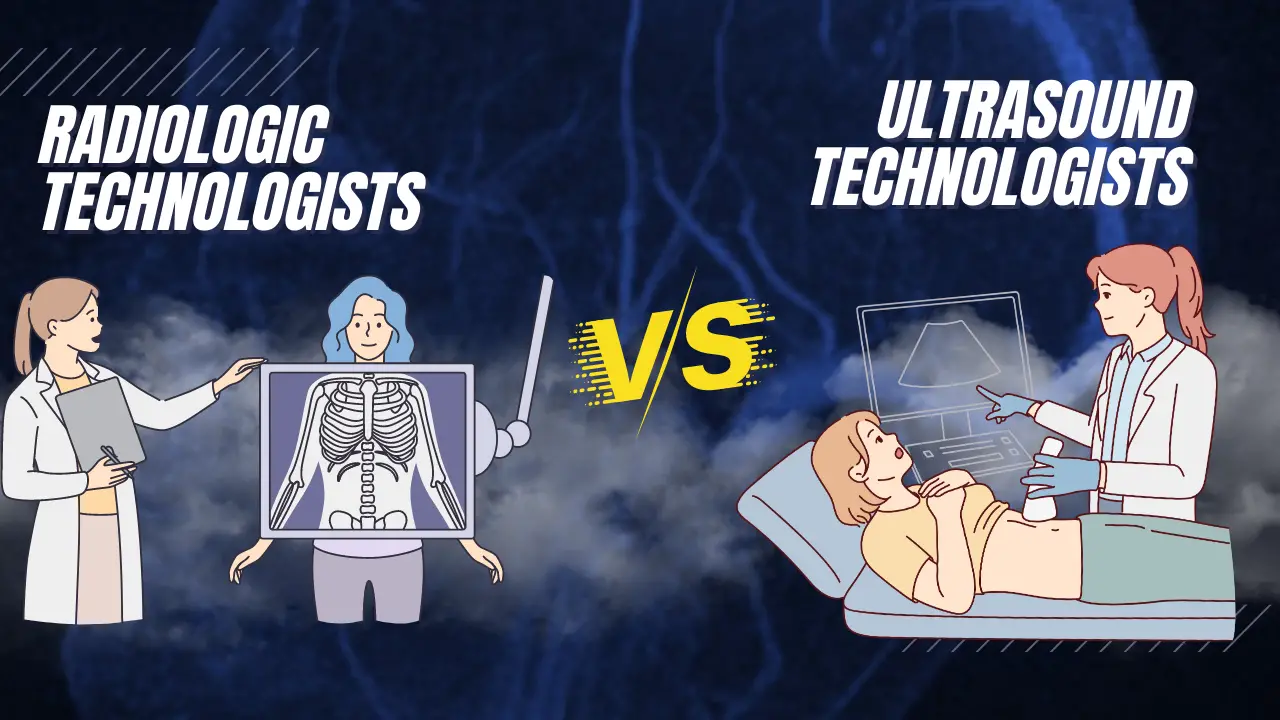Choosing a healthcare career? Consider the dynamic fields of Radiologic technologists and Ultrasound technologists.
Our comprehensive guide compares these two essential roles, exploring their responsibilities, demand, earnings, work nature, and health and safety considerations.
Whether you’re an aspiring healthcare professional or simply interested in understanding more about these professions, our analysis aims to provide valuable insights to help you make an informed decision.
Dive in to learn more about these impactful careers in the healthcare sector.
What do Radiologic Technologists and Ultrasound Technologists Do?
Although operating within diagnostic imaging, Radiologic Technologists and Ultrasound Technologists utilize different methods for conducting patient examinations.
Radiologic Technologists, commonly called Rad Techs, are experts in capturing images of the body’s internal structures using X-rays and other imaging equipment such as CT scanners and MRI machines.
In contrast, Ultrasound Technologists, also known as Sonographers, specialize in using sound waves to generate images.
These images are crucial in several healthcare domains, such as prenatal care, diagnosing cardiovascular issues, and identifying organ abnormalities.
The Current Market: Demand and Earnings
Rad Techs and Sonographers are in demand across healthcare establishments, thanks to the growing emphasis on early and accurate diagnosis.
The demand can fluctuate based on factors like location and specific healthcare requirements.
There is a surge in demand for Ultrasound Technologists, often accompanied by enticing compensation packages, including sign-on bonuses.
The compensation for these professionals varies significantly based on location, experience, and specialization.
For example, Sonographers and Radiologic Technologists earn an average of about $40/hr in Las Vegas.
However, salaries can be higher or lower depending on the local job market’s cost of living and demand-supply dynamics.
Variety Versus Specialization: What to Expect at Work
The nature of work differs quite significantly between these two roles. Given their ability to operate various imaging equipment, Radiologic Technologists enjoy a significant amount of variety in their job.
They are exposed to multiple challenges and learning experiences, mainly if they work in fast-paced settings such as Emergency Rooms.
On the other hand, Ultrasound Technologists, given the specialized nature of their work, often have a more focused routine.
While some may perceive it as monotonous, others find this specialization appealing, allowing them to develop deep expertise in a particular diagnostic area.
Health and Safety Considerations
The physical implications of the work should also be considered while choosing between these two professions.
Due to the nature of their work, ultrasound Technologists are at a higher risk for repetitive motion injuries.
These could include strain on the shoulders, neck, and back due to frequent and precise movements required during ultrasound examinations.
While not wholly exempt from such risks, Radiologic technologists generally face fewer physical challenges.
However, their work involves radiation exposure, albeit minimal and within safe limits, when conducting X-ray or CT examinations.
Job Roles and Personal Comfort Level
Another point of differentiation lies in the level of physical intimacy involved in patient examinations.
Ultrasound Technologists often perform scans that involve more private areas of the body.
Therefore, comfort in managing such situations professionally and empathetically is crucial for Sonographers.

Conclusion
Choosing a career between a Radiologic Technologist and an Ultrasound Technologist boils down to personal preferences, career goals, and comfort levels.
Both offer ample opportunities for growth and learning and significantly contribute to patient care.
It’s essential to understand both roles comprehensively and consider personal strengths and interests before making a career decision.

